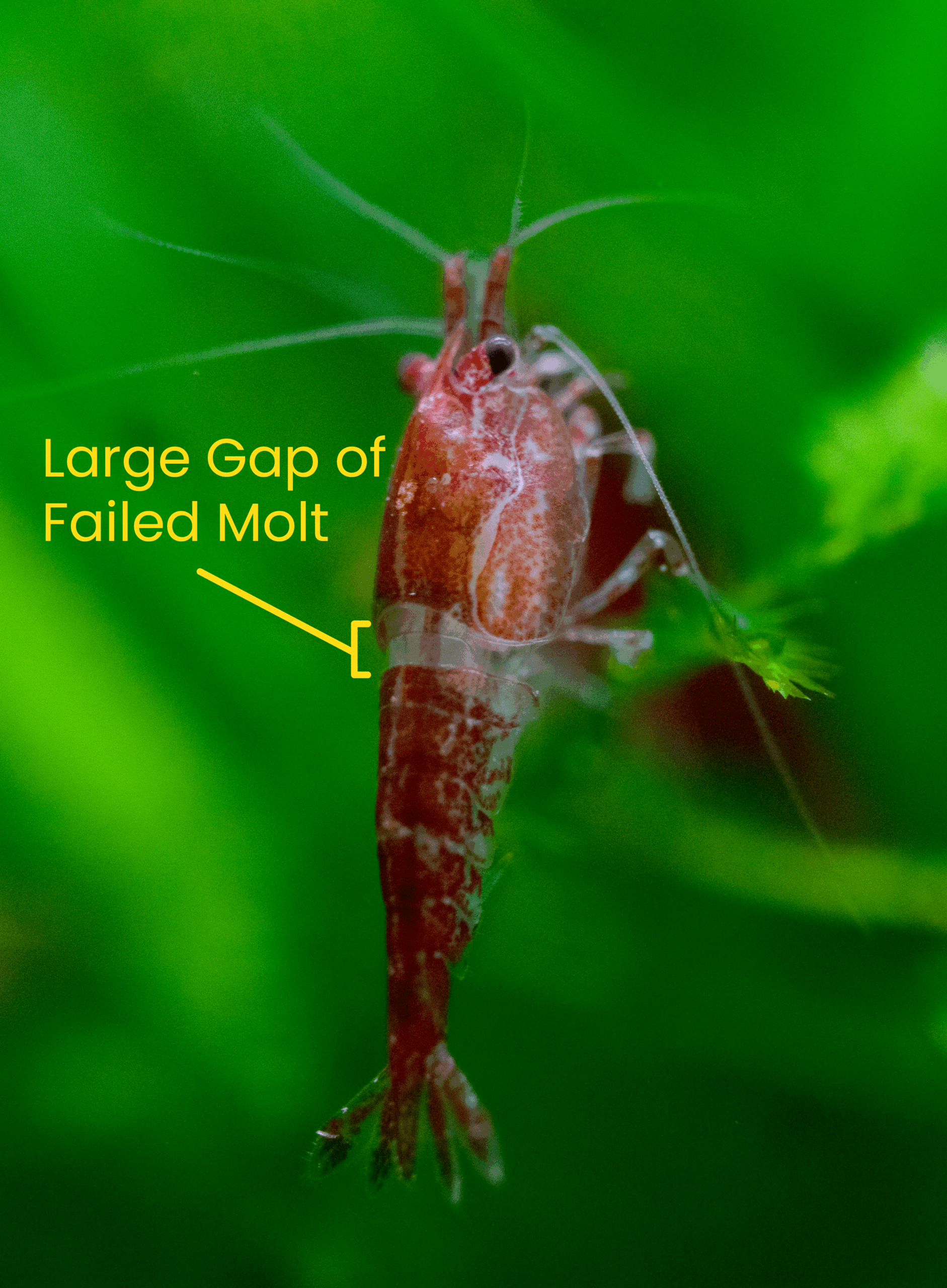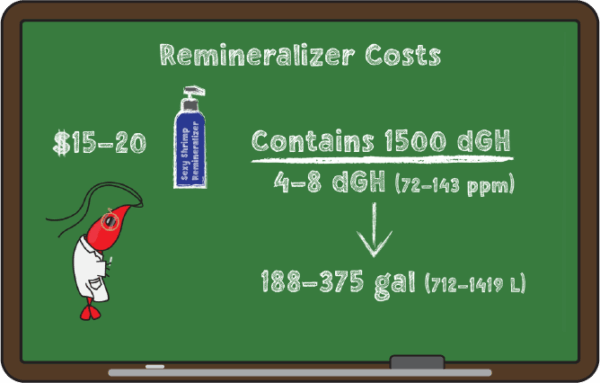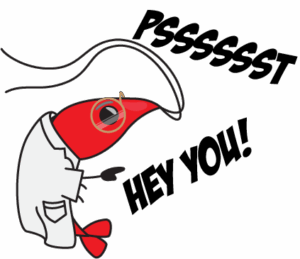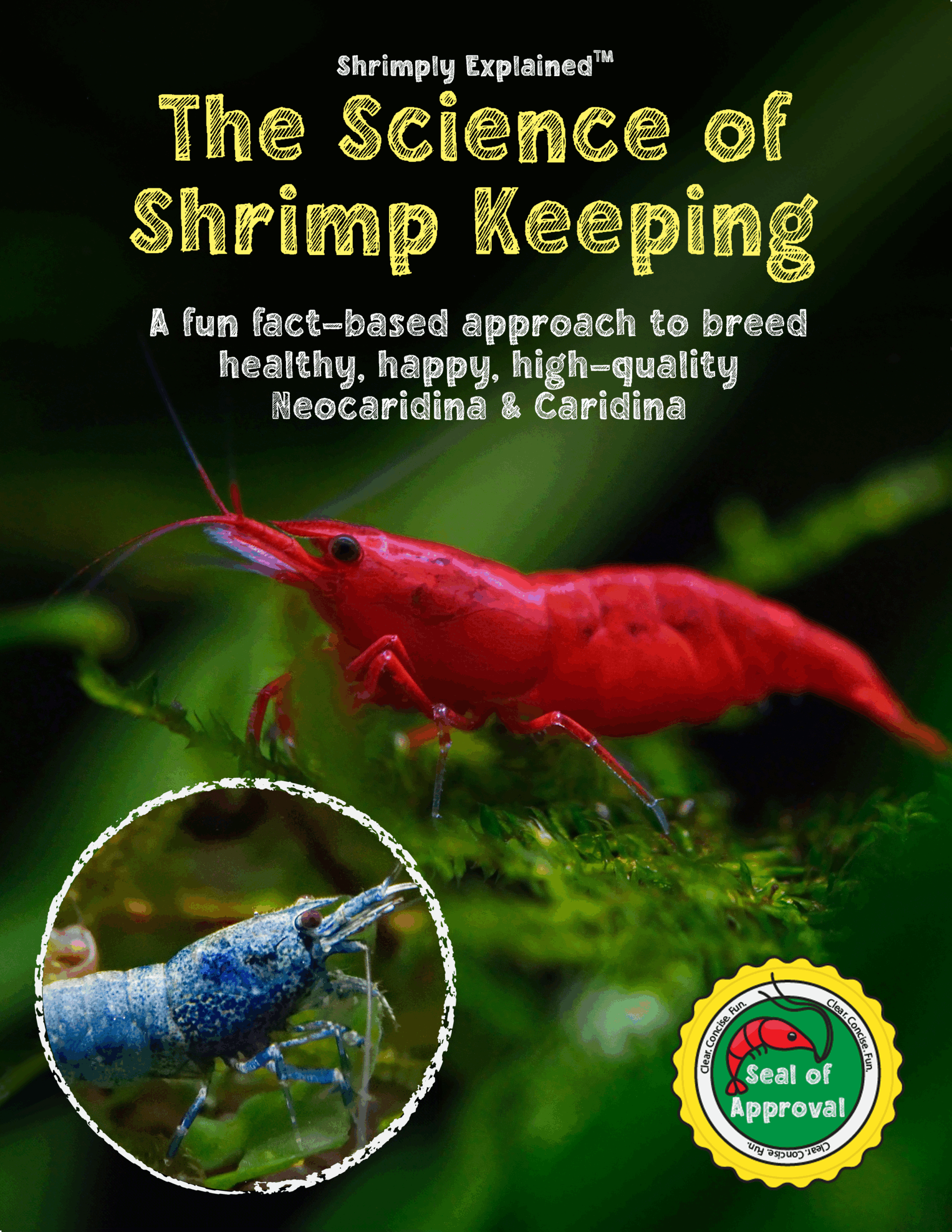Shrimply Explained is currently undergoing renovations. Please don't buy anything yet. Thank you!
Your water tests show perfect pH, GH, KH, ammonia, nitrites, nitrates – everything in range – but your shrimp keep dying. This is an extremely common problem with tap water, and it's incredibly frustrating. How can water be unhealthy if all the parameters test perfectly?
Here's the truth: There are invisible problems that affect shrimp but don't show up on typical water tests. Copper that poison our shrimp, excess nutrients promoting harmful bacterial growth, molting problems caused by wrong mineral ratios despite correct GH readings – none of these get picked up by standard tests (although copper is often on test strips).
The solution? A remineralizer combined with purified water. This combination gives us complete control over our shrimp tank water chemistry. Let's dive into what remineralizers are, when to use them, and how to use them effectively.
By the way, a video version of this article is available on our YouTube channel!
Please note that Shrimply Explained is an Amazon Affiliate Partner. We may receive commission on some product links.
Other Shrimp Content
We have a lot of content coming soon. Please follow us on social media and subscribe to our newsletter for updates and useful shrimp care tips!
Before we discuss remineralizers, we need to address a common misunderstanding about general hardness (GH). GH measures the quantity of minerals in water, which supposedly tells us whether there are enough minerals for shrimp to molt and build strong shells. If the GH is in the right range for our shrimp species, they should molt properly, right?
Wrong, unfortunately. GH only measures mineral quantity and tells us nothing about the quality of those minerals. Shrimp need the right ratio of calcium and magnesium to build shells with the proper balance of protection and flexibility – rigid enough to protect them from predators but limber enough to squeeze out of during molting.
On average, tap water in the US has a mineral ratio of around 3:1 Ca:Mg (Calcium-to-magnesium), but differing geologies change this ratio in each state, county, or even between towns. These ratios can also change seasonally based on rainfall and other factors at water treatment plants. This variability makes it difficult to maintain consistent, optimal conditions for our shrimp.
Ideally, we want complete control over our minerals without worrying about these fluctuations. That's where remineralizers and purified water come in.
A remineralizer is a powder or liquid that adds essential minerals like calcium and magnesium into water at the right ratios for shrimp. All remineralizers increase GH, but some also increase carbonate hardness (KH) and pH, which may be important depending on the species we want to keep.
Remineralizers can be used with tap water, but they're most effective when paired with purified water for maximum control and safety.
RO (Reverse Osmosis) is a filtration process that removes 90-95% of substances from water by pushing it through a sequence of filters. Deionization (DI) is an additional filtration step that removes the last few percent of substances, leaving extremely pure water. Distilled water is another type of filtration that also creates very pure water.
Here's an important safety note: Pure water cannot support life on its own. Cells absorb pure water and get ripped apart by the imbalance of concentrated salts inside the cell and pure water outside. Every bacteria, plant, and shrimp needs minerals to survive, which is why a remineralizer is critical when using purified water.
Note: You can add pure water to an established tank when replacing evaporated water, since minerals are already present in the tank.

Water Purification Diagram: Stages 1-3 consist of consecutively smaller membranes that filter out particulates, creating RO water. Stage 4 is the deionization step, which passes water through beads that attract remaining ions that haven't been filtered out by previous stages.
Honestly, if you have the budget for it, we always recommend remineralized RO/DI water regardless of shrimp species or setup. The amount of control over water parameters is unmatched, making maintenance and troubleshooting significantly easier.
Remineralized water increases the chance of success, but it's not always necessary. Neocaridina, Amano, bamboo, ghost, and vampire shrimp often do fine in tap water. If you plan to use tap water, check with local hobbyists in Facebook groups or at the local fish store to find out if they've successfully kept shrimp in the local water. The best option is to buy shrimp that they've adapted to tap water, as that gives you the best chance of success.
Soft water Caridina breeds like crystal shrimp and Taiwan bees are the exception – they really shouldn't be kept in tap water because it so rarely has the right parameters for them. Research has shown that even when tap water does match the required parameters, Caridina often don't survive or breed as well compared to remineralized RO/DI water.
If you're starting with tap water and want to know when a remineralizer might help, watch for these signs:

Caption: A cherry shrimp (Neocaridina) with the white ring of death (failed molt).
Step 1: Acquire purified water from your grocery store, local fish store, or a home filter.
Step 2: Add your remineralizer according to the instructions until you reach your desired GH/KH. Liquid remineralizers generally indicate how many gallons they'll raise by a certain GH for each pump, while powder remineralizers do the same based on the weight of added powder.
Step 3: Stir to mix. This step can take 30-60 seconds with most powdered remineralizers, but liquid remineralizers just need a quick stir for a couple of seconds.
Step 4: Measure the GH/KH to verify you reached the desired parameters. Add more remineralizer if needed or dilute with pure water to lower GH/KH.
Step 5: Perform a water change with remineralized water. Water changes are typically 10-20% for shrimp tanks, although you may want to do a larger water change if there's an imminent problem in the tank. One significant change to establish healthy water may be safer than letting shrimp sit in unhealthy water for longer.
A common complaint about remineralized water is the cost – and it's true that it's not cheap. Understanding the actual numbers helps put it in perspective.
In general, powder or liquid remineralizer costs $15-20, which is enough to raise around 1,500 gallons of water by 1 dGH. Most shrimp keepers want 4-8 dGH, so we divide the volume by 4 or 8 to get the total volume of water remineralized. Basically, one remineralizer can treat 187-375 gallons of purified water.

For a 20-gallon tank with 10% weekly water changes, the remineralizer will last between 93 and 187 weeks.
Don't be fooled by cheap prices. A remineralizer like Equilibrium seems like a good deal at half the cost of other remineralizers, but this amount actually only treats a third of the water volume. We recommend Salty Shrimp (GH+, GH/KH+), Brightwell (GH+, GH/KH+), or Flip Aquatics' Shrimple line (GH+, GH/KH+) of remineralizers for the best value. (Remember to get GH+ for softwater Caridina with active substrate or for boosting GH in any tank. Use GH/KH+ for other shrimp species)
Water Costs
The largest expense of remineralized water isn't the remineralizer – it's the water itself. Here are the potential sources and costs associated with each, based on our previous example of a 20g tank with 10% weekly water changes:
Note: You do want the 4-stage system that comes with a DI filter, as this extra stage significantly improves filtration. These filters require replacement approximately every 1,500 gallons, so you'd need to spend $35 every 10 years or so based on the 20-gallon tank maintenance schedule above. If you're keeping multiple shrimp tanks or any expensive shrimp, an RO filter is an excellent investment in their health.

Like what you're reading?
Our eBook, The Science of Shrimp Keeping, has tons of practical shrimp keeping advice you won't find anywhere else. Over 300 pages of Shrimply Explained information backed by 150+ scientific citations.

Yes, it is possible to make your own remineralizer. However, it isn't as easy as simply combining the right ratio of calcium and magnesium carbonate. A balance needs to be found between solubility and nutrients, as some of the more soluble salts end up adding excess sulfate or chloride, which can result in algae problems and poor plant growth. We plan to discuss the complexities in a future article.
Remineralized water gives shrimp keepers unprecedented control over water chemistry, eliminating hidden variables that standard water tests miss. While it requires an initial investment and some learning, the ability to troubleshoot problems, maintain consistency, and provide optimal conditions for sensitive species makes it worthwhile for serious shrimp keepers.
For hardy species like Neocaridina in good tap water, remineralized water isn't strictly necessary but is still beneficial. For sensitive Caridina species, it's essentially required for long-term success. The choice depends on your budget, species, and how much control you want over your shrimp tank environment.
Whether you start with remineralized water or transition to it after encountering problems, understanding how remineralizers work and how to use them properly puts you ahead of most shrimp keepers. Your shrimp will thank you with successful molts, vibrant colors, and healthy breeding.
Pssst... Want to learn everything you need to know to have happy and healthy freshwater shrimp? We've got you covered with clear, concise, and fun information in every lesson of The Shrimp School!
You know it's true because we have a badge.